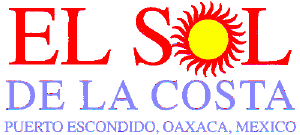

Fri 6
Election of "La America"
This event is to select the young woman who will represent Puerto during this month's events celebrating the 192nd anniversary of the launching of México's struggle for Independence.
It's not a beauty contest: participants must be students who can demonstrate a knowledge of Mexican history and be able to sing the national anthem. No mean feat.
6 p.m. Events Palapa at the Town Hall Esplanade
Fri 6 - Sun 8
Fiesta of the Birth of the Holy Virgin
A traditional saint's day fiesta activities will be held in many communities, most named Sta. María, including Santa María Colotepec. These include the convite and calenda, parades led by brass bands and huge papier-mache puppets through the streets of town inviting everyone to participate in the festivities. The calenda takes place at night and includes faroles, candlelit paper globes.
Also common to these fiestas on the coast are the castillo fireworks display (Sept. 7), rodeos, cockfights and dances.
Fri 13
Commemoration of the Heroic Children of Chapultepec
The martyrs of the defense of México City against the invading U.S. juggernaut, young cadets from the military academy in Chapultepec Castle - itself a powerful symbol of national identity - are remembered on this day, the 154th anniversary of their deaths. (More details below)
A flag-raising ceremony takes place at 7 a.m. and a civic ceremony eulogizing the national heroes begins at 9 a.m. An honor guard comprised of students from various local schools and colleges holds vigil throughout the day at the monument to the Heroic Children located in the Town Hall Plaza
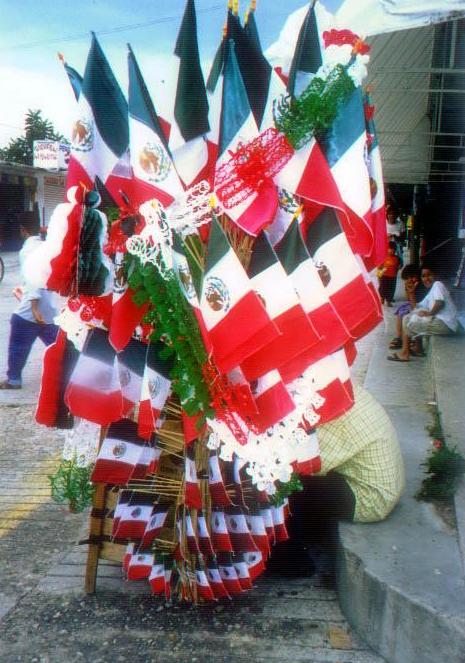 Sun 15
Sun 15
Ceremony of the Cry for Independence
México's independence movement began with the call to take up arms against Spanish rule by Miguel Hidalgo y Costilla, the parish priest in the town of Dolores.
On this night before Independence Day, people gather at the local government building to watch music and dance performances, listen to speeches and the traditional ceremony remembering the Cry of Dolores, el Grito de Dolores.
The Program:
8:30 p.m. Social and Cultural Presentation
Town Hall Esplanade
9:30 p.m. "La America" (See Fri 6) makes her way through the main streets of town to the Town Hall Esplanade
11 p.m. Grito Ceremony
11:30 p.m. Dance with Alvaro Monterrubio and the Santa Cecilia Band
Town Hall Esplanade
Mon 16
Independence Day
192nd anniversary of the birth of the movement for independence from Spain is a national holiday; banks, government offices and some businesses will be closed
8 a.m. Civic Ceremony
Jurez Sports Stadium
8:30 a.m. Parade
The army, civic groups and every school and college in town participate. The parade marches down Av. Oaxaca to Hidalgo, then over to the Town Hall Esplanade
Sat 21
Full Moon in Pisces at 8:59 a.m.
Pig Roast & Street Fair
hosted by El Pegaso restaurant on the Adoquín: an early taste of October Fest.
8 p.m. - midnight
Sun 22
Autumn Begins at 11:55 p.m.
Fri 27 - Mon 29
Fiesta of Saint Michael
The usual complement of parades, fireworks, dancing and bullriding events. Puerto's colonia San Miguel
Friday October 4
Fiesta of Fandango
San Pedro Tututepec
On the first Friday of October this quiet hilltop town holds a fiesta of Fandango, a variatio of the chilena music, that is typical of the coastal region of Oaxaca.
A traditional 8-man band plays and the population dances from midday until dawn. The fiesta mayordomo (sponsor) provides food and drink for all-comers.
The party is repeated on the following Friday.
Etc.
Frisbee Golf: Wicked sand traps and a huge water hazard.
Wed and, Sat at 4:30 p.m. The Split Coconut, opp. Hotel Sante Fe
Radio, Radio
Helena Szutska, known to her listeners as "Lucy Sonido", presents bilingual world-music radio shows on local FM radio station Esmeralda, 94.1FM.
"Chiles y Chocolates"
8 to 10 p.m. on Sundays
"La Luciernaga"
3 to 4 p.m. on Wednesdays
11 a.m. to noon on Saturdays
And now another show:
"Amnesia", remembering the music from the 60s, 70s and 80s.
4 to 5 p.m. on Saturdays
 Flags, parades and civic ceremonies mark the month of September, known in México as the "month of the nation" (el mes patrio), which commemorates the events and individuals who forged and protected Mexican Independence.
Flags, parades and civic ceremonies mark the month of September, known in México as the "month of the nation" (el mes patrio), which commemorates the events and individuals who forged and protected Mexican Independence.
Many of the names are familiar to visitors because literally thousands of streets, neighborhoods, towns and even states are named for these national heroes: Hidalgo, Morelos, Guerrero, Matamoros, Allende, Aldama to name a few.
Independence Day is celebrated on Sept. 16 with parades and civic ceremonies in every village, town and city in México.
The preceding night (Sept. 15) the Ceremony of the Cry for Independence takes place. It marks el Grito de Dolores (the Cry of Dolores), Father Miguel Hidalgo's impassioned call for a popular uprising that launched the movement for independence from Spain in 1810.
This was a time when revolutionary upheaval and radical change swept through both the Old World and the New. The exciting new ideas of the Enlightenment inspired both the American War of Independence and the French Revolution.
Rationalism, the pursuit of science and the arts, the promotion of religious tolerance, and a desire for government free of tyranny. It was pretty heady stuff.
In New Spain it was the criollos, or native-born descendants of Spanish colonists who were stirred by these winds of change. They were the intellectuals and officials, clergy and merchants whose careers and opportunities were limited because they were not Iberians.
Bridling under the reactionary and repressive political, economic and cultural control of Spain, more and more they defined themselves as Americans.
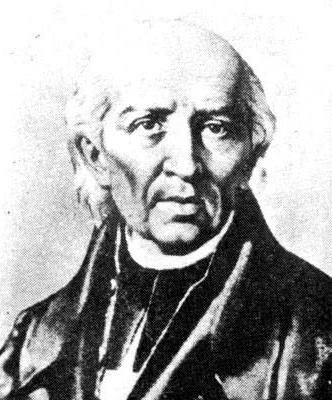 In 1808 Napoleon invaded Spain and, forcing the abdication of King Ferdinand VII, placed his brother on the Spanish throne. This was met with resistance in Spain and political confusion in the colonies and it offered the independentistas the opportunity to meet and organize under the political context of expressing opposition to an illegitimate king, rather than to Spanish rule.
In 1808 Napoleon invaded Spain and, forcing the abdication of King Ferdinand VII, placed his brother on the Spanish throne. This was met with resistance in Spain and political confusion in the colonies and it offered the independentistas the opportunity to meet and organize under the political context of expressing opposition to an illegitimate king, rather than to Spanish rule.
In 1810 the wife of the alderman of the town of Queretaro, doña Josefa Ortiz de Dominguez, along with Ignacio Maria de Allende, Juan Aldama, Mariano Abasolo among others planned an uprising for that October.
The parish priest of the town of Dolores, Miguel Hidalgo y Costilla, a brilliant academic and fervent campaigner for social justice, was invited to join the group. Royalist authorities got wind of the plot, however, so it was decided to move immediately and on the night of Sep. 15, word was sent to Father Hidalgo.
At dawn the next day, as people arrived from the surrounding areas for early mass, Hidalgo issued his call to take up arms against tyranny and the war for Mexican liberation began.
That day his forces, poorly armed, untrained and undisciplined, marched to Atotonilco and seized the standard of the Virgin of Guadalupe and made it the flag of the insurgent forces.
A series of rapid victories followed, but inexplicably the rebels did not press their advantage and march on the poorly-defended capital. Royalist forces were allowed to regroup and in the following months the original conspirators were killed in battle or captured and executed.
José María Morelos fought on until his capture and execution in 1815 and the struggle was kept alive by small guerrilla groups, most notably Vicente Guerrero's in the south and Guadalupe Victoriano's in Veracruz.
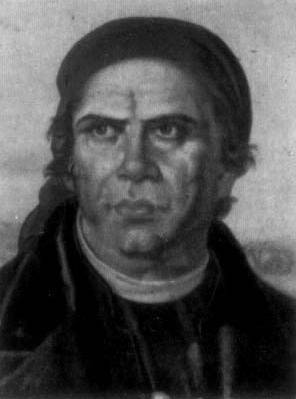 It would be 11 years and 11 days after Hidalgo's Grito, Sept. 27, 1821, before the independence forces entered México City in triumph to finally proclaim México free of colonial rule from Spain.
It would be 11 years and 11 days after Hidalgo's Grito, Sept. 27, 1821, before the independence forces entered México City in triumph to finally proclaim México free of colonial rule from Spain.
Throughout México on the night of Sept. 15 the local head of government -- or in the case of México City, the President himself -- commemorates the start of the independence movement with the following speech:
"Mexicans, long live México; Long live Independence; Long live Miguel Hidalgo y Costilla; Long live José María Morelos y Pavon; Long live all the heroes who gave us our country and our freedom.
"Long live México! Long live México! Long live México!" Flags are waved, the freedom bell is rung and fireworks are launched. The ceremony is proceeded by speeches and often folkloric dancing and concerts of typical Mexican music.
In Puerto Escondido the night ends with a dance featuring Alvaro Monterrubio's Santa Cecilia Band. El Grito takes place at 11 p.m.
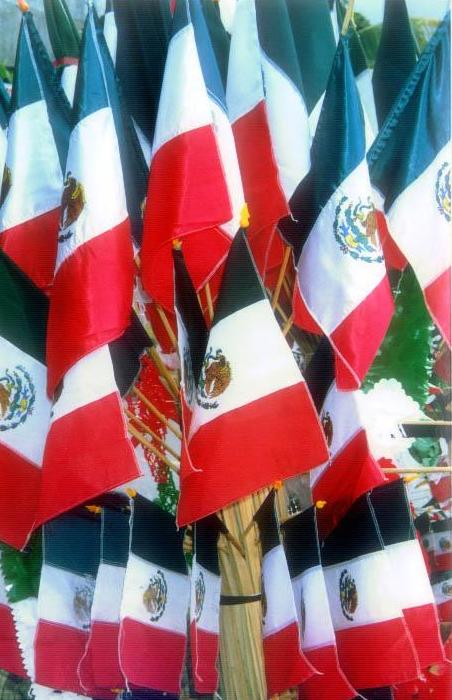
The early decades of independence were troubled times for the new nation. The war had devastated the economy and political instability made effective government impossible.
There were also threats from abroad. Spain refused to accept the loss of its colony and blockaded the country. France and the United States pressured for compensation for losses suffered during the civil upheavals, payments the bankrupt young republic was unable to make.
In what became known as the "War of the Cakes", Guerra de los Pasteles, the French seized Veracruz and forced the government to sign a treaty paying indemnification, including 60,000 pesos for a baker who had not been paid for cakes consumed by some soldiers.
Then it was the turn of the aggressively expansionist United States. With an ineffectual central government and an army poorly equipped and with unbelievably inept leadership (Does the name Antonio López de Santa Ana ring a bell?), México was powerless to prevent the annexation of Texas and then the invasion by U.S. forces lead by Gen. Winfield Scott.
But the defending Mexican forces did not lack courage. In 1847 in the capital, the cadets at the military school at Chapultepec who offered their lives in last ditch defense against the invaders.
On Sept. 13, these martyrs are remembered as the Heroic Children of Chapultepec.